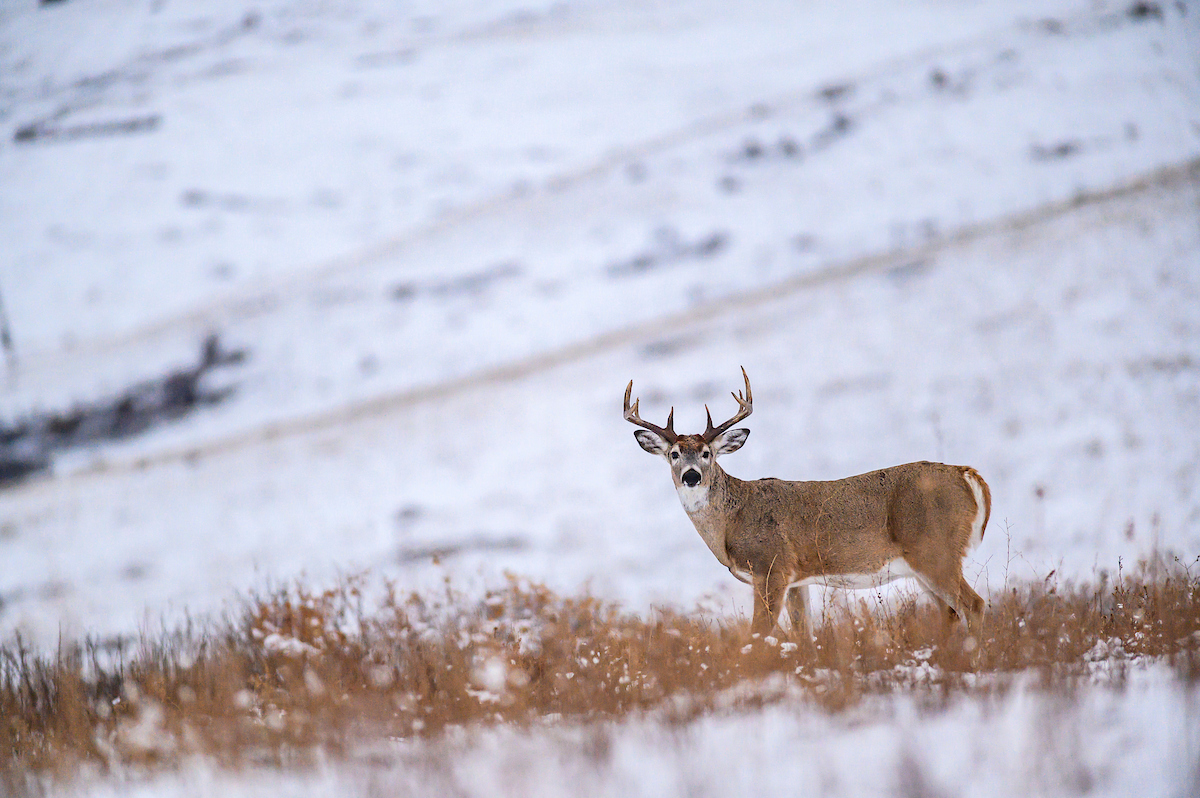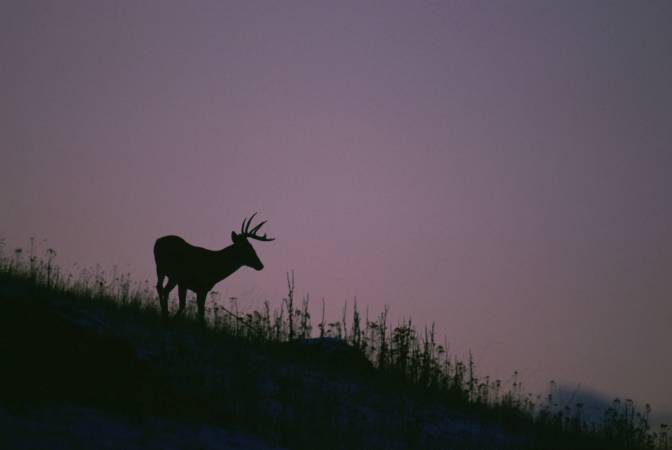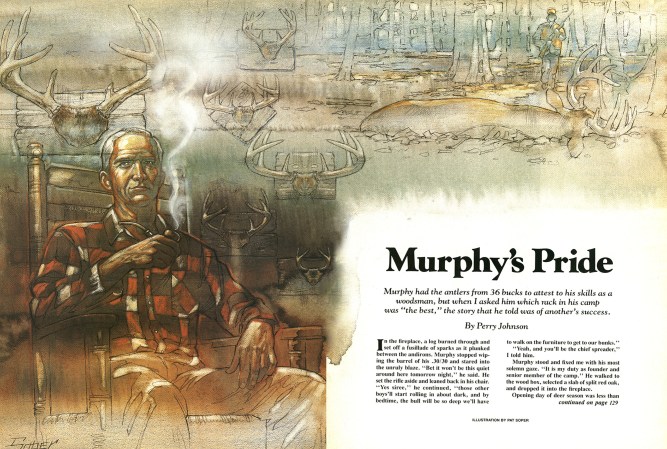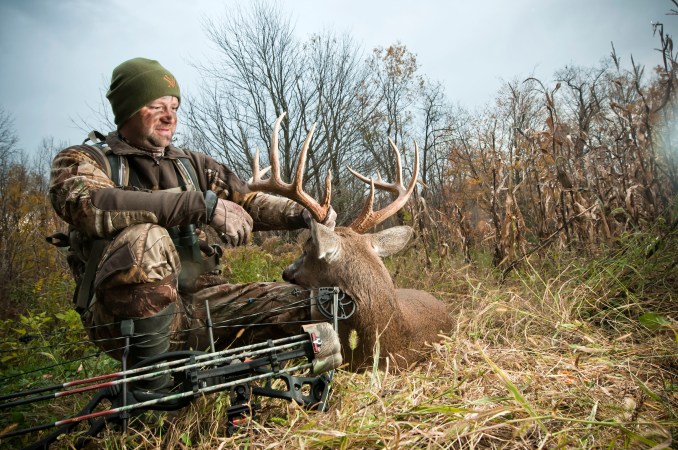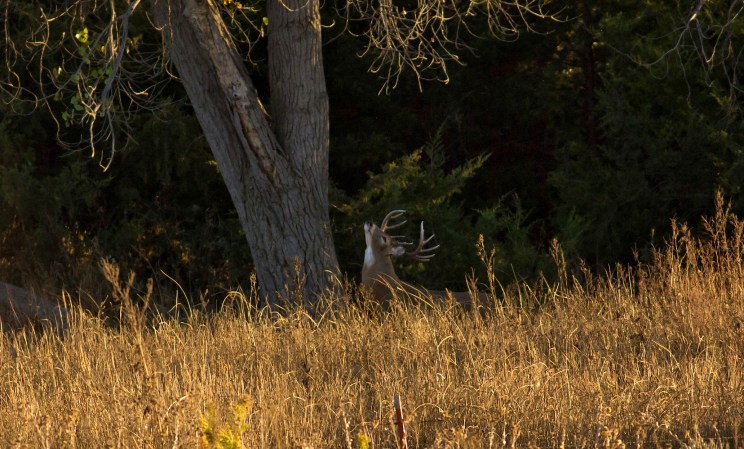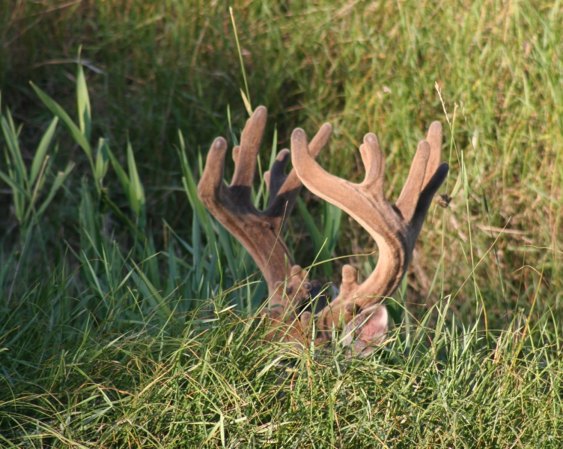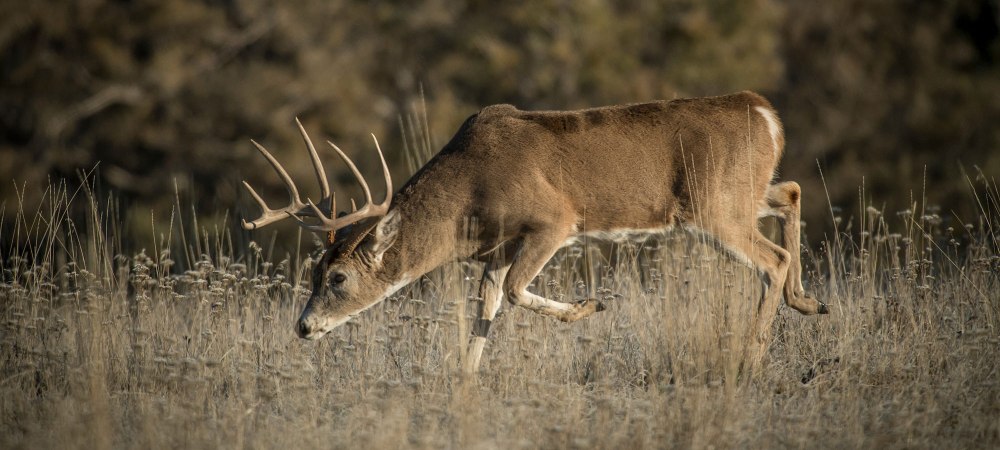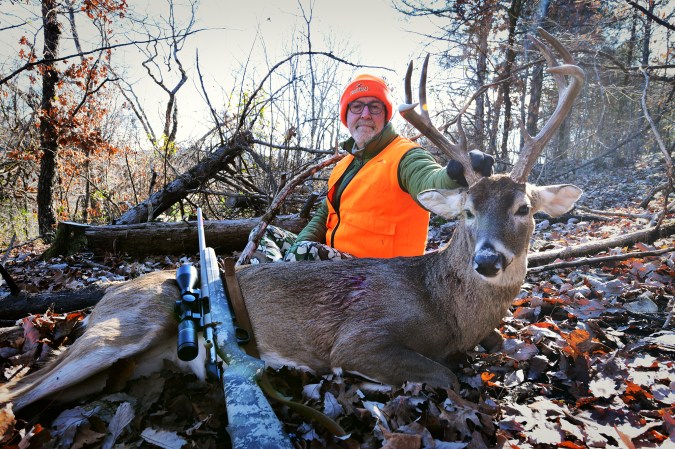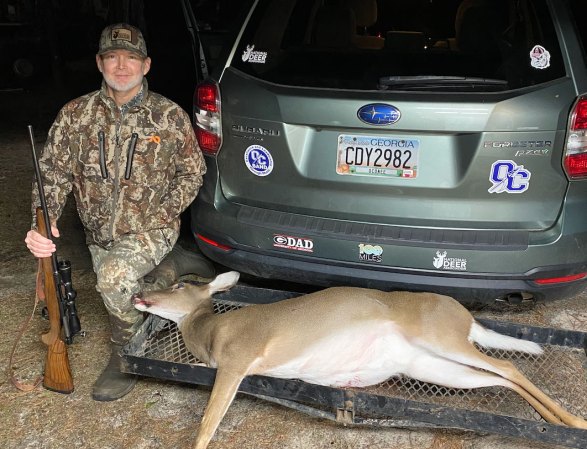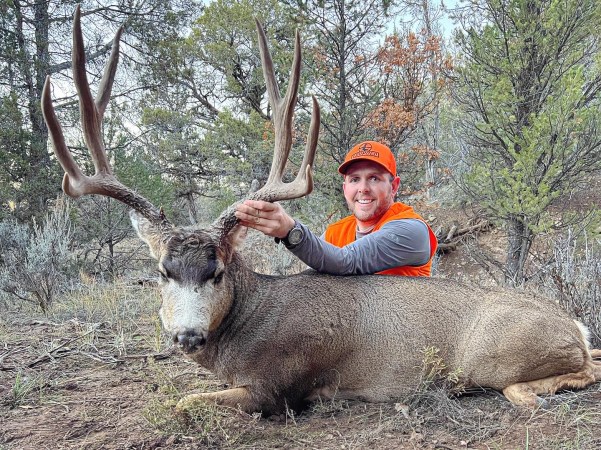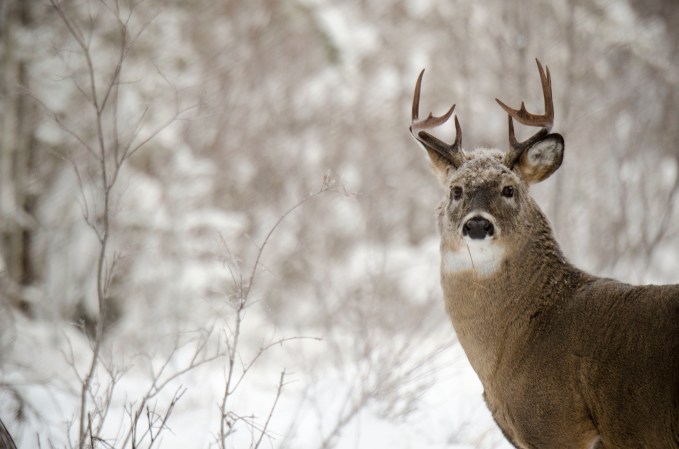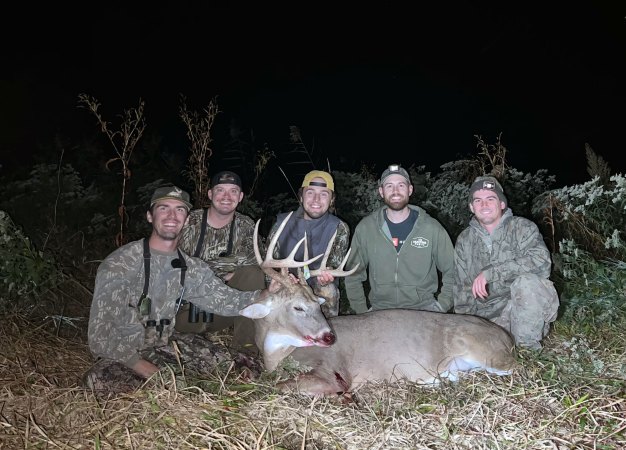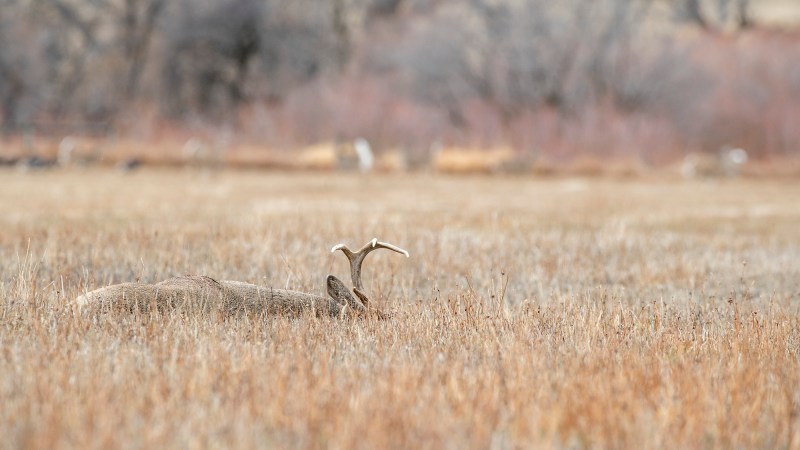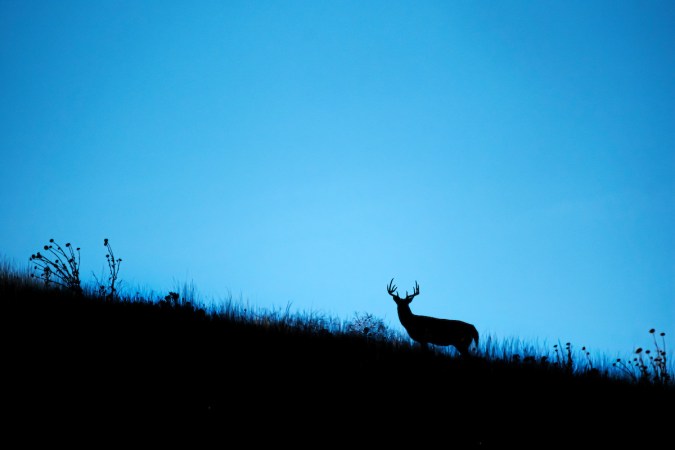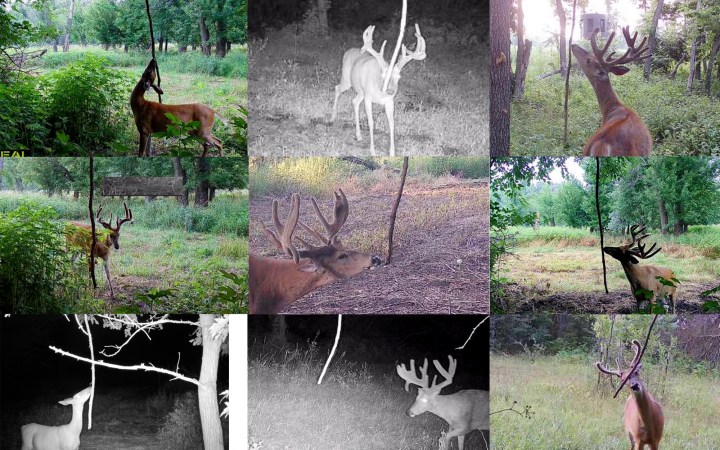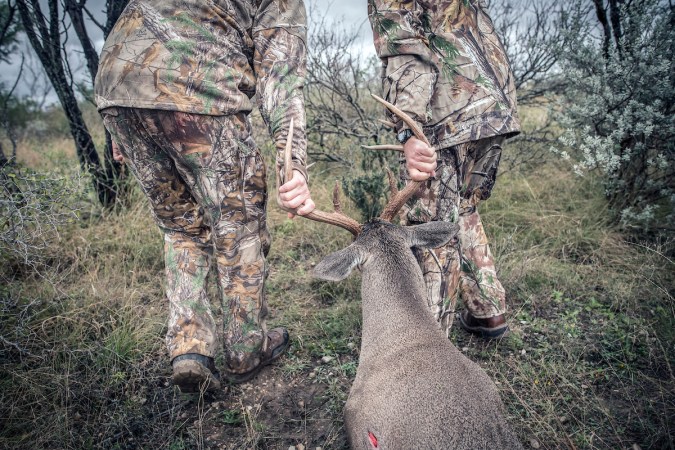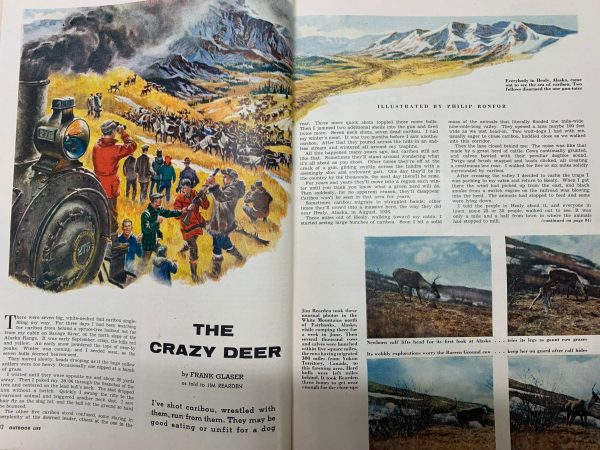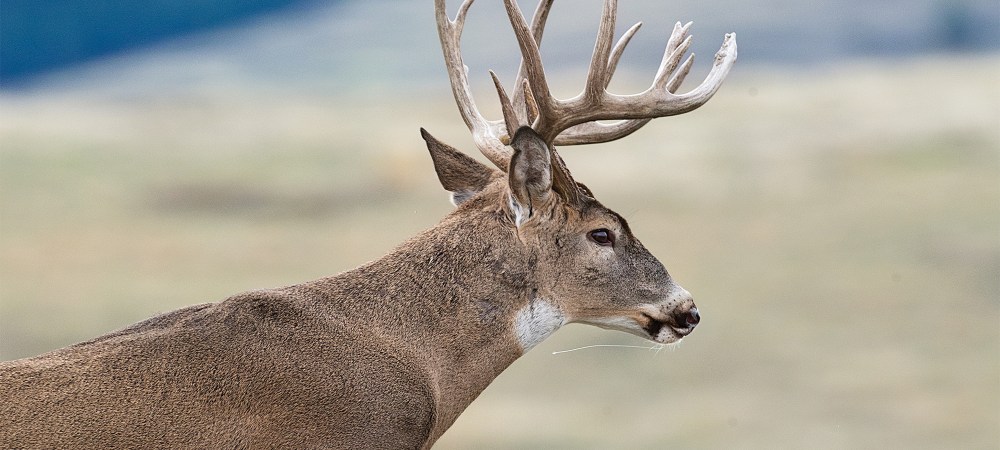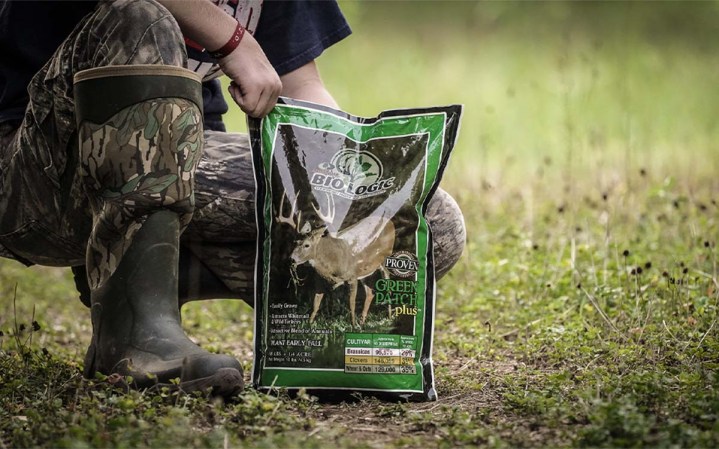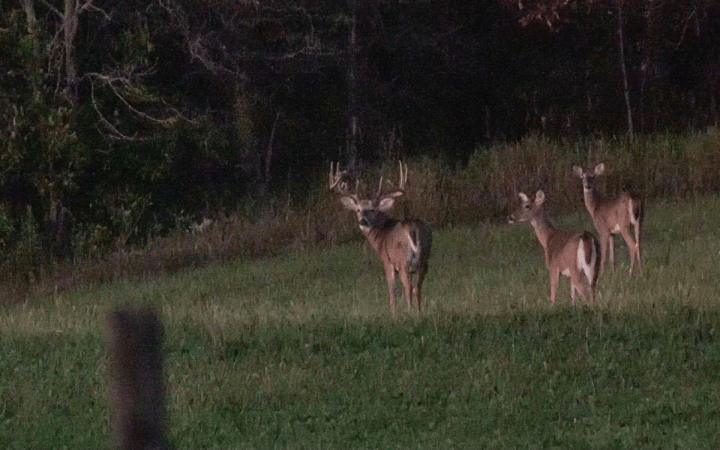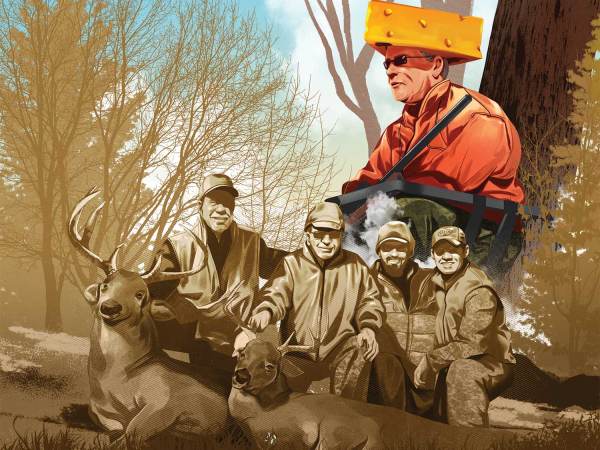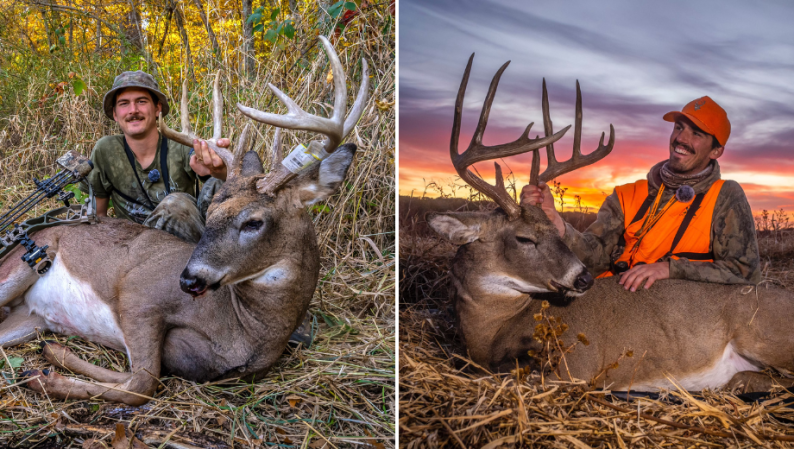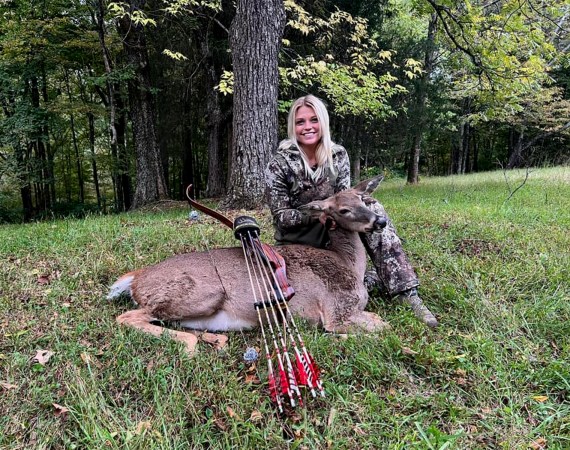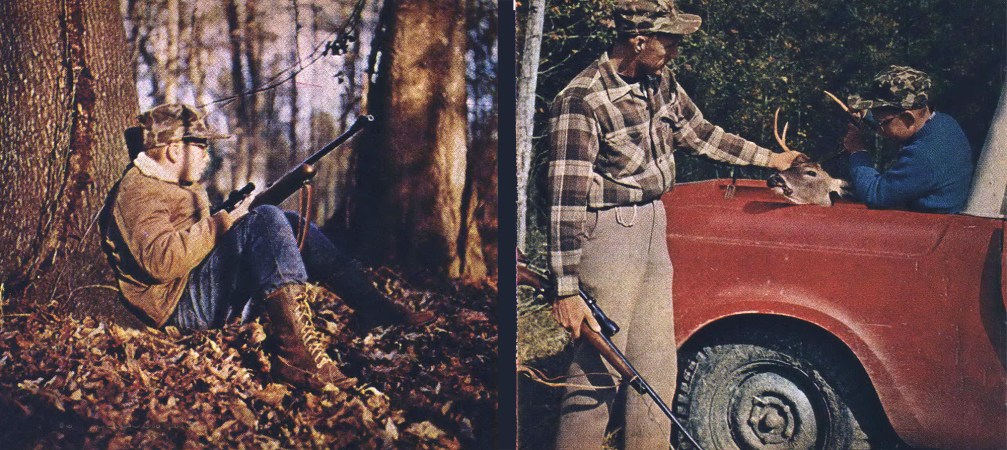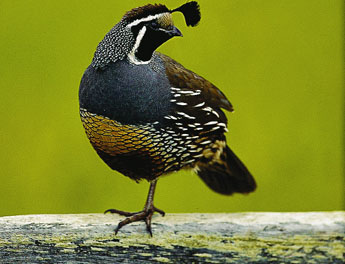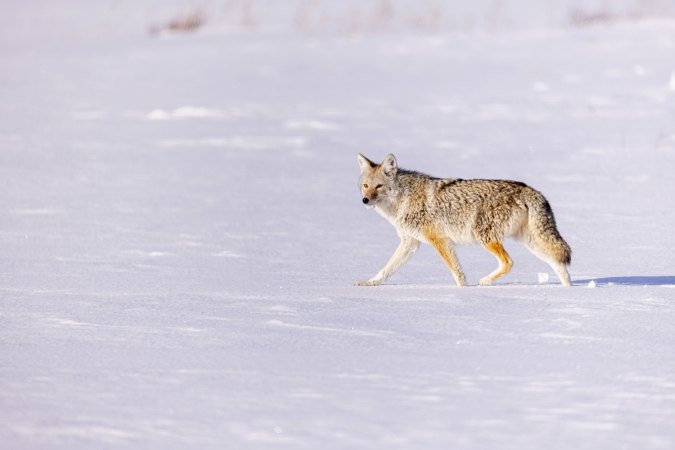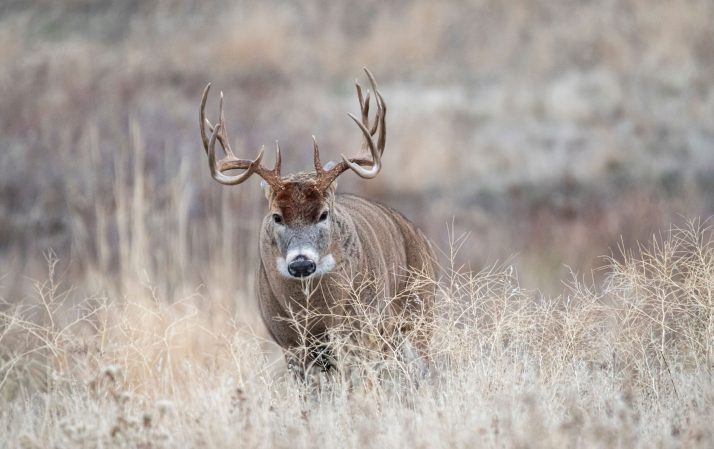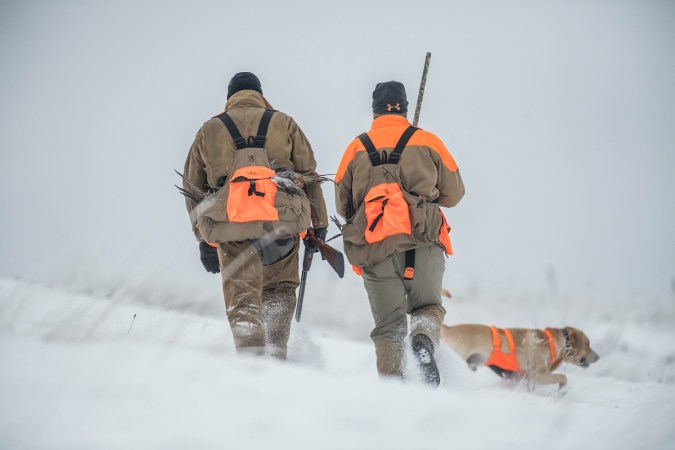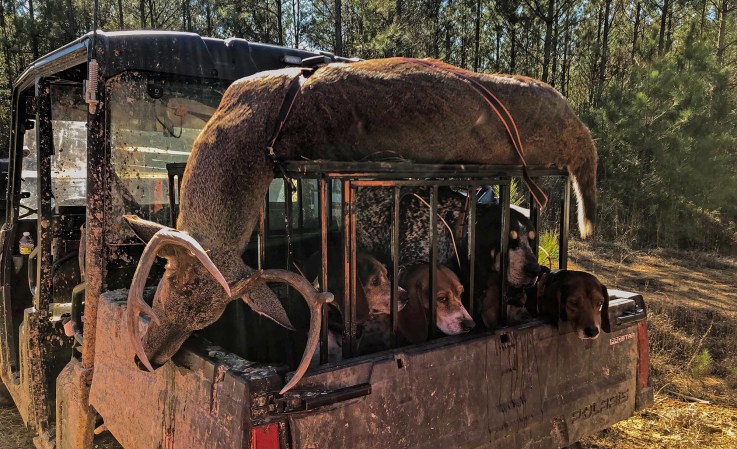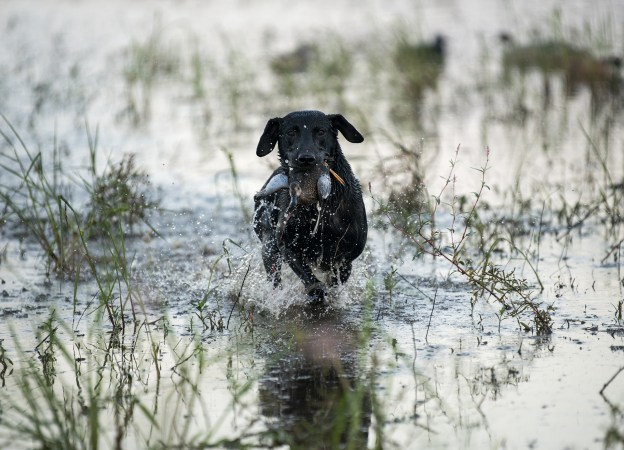It would be an easy thing, giving up. No one would notice. Those who might would understand. The heat of the rut is over, in most places. Opening weekends have come and gone. All your buddies have seemingly tagged out on great bucks.
But here’s the thing: When deer season starts winding down, the days that are left can be pretty damned good. They can also be cold, tough, and a serious grind. Welcome to hunting the late season. If you want to have success during the last quarter of deer season, there are a few tips and tactics you need to follow. To help you punch that tag before time runs out, we’ve gathered the best late season deer hunting tips for the East, Midwest, Southeast, and West.
Late Season Deer Hunting Tips for the East
1. Put Your Best Foot Forward
In the Northeast, late season deer hunting kicks into high gear once the snow flies, and you can count on that happening anytime after Thanksgiving. The very first flop of snow—6 inches or more—seems to make things happen.
2. Find Food
Foot-deep snowfalls will force deer into full survival mode. Now’s the time to get back to that nut-laden red-oak flat or fruit-filled abandoned apple orchard you tucked into the back of your mind during early season. And it’s critical to be there waiting the first late afternoon following a storm. Deer will be on the move early.
Read Next: The Best Gifts for Deer Hunters
Does will likely be the first to arrive, so be patient and hold your shot until the waning hours of legal shooting light. If the does act nervous around the food source, bucks may be approaching.
3. Hunt the New Rut
Unbred does re-enter estrus approximately 28 days after the peak of the primary rut. If you’re expecting to see the frenetic chasing activity of a month ago, you’ll be disappointed.
When the second rut kicks in, however, do your utmost to find a hot doe and shadow her. How? You can identify a doe in heat by the red droplets of blood she leaves in the snow upon urination. Track her with an ever-vigilant eye out for bucks who might be trailing her.
4. Timber
Ideally, you should hatch this killer late-season tactic in spring. If trees on your deer lease need thinning, cruise the property as the leaves pop in April and May. Mark the trees—poplar, ash, maple—with spray paint and leave them standing until late fall.
Once late deer season snow hits, wait until midday and knock down a couple of the marked trees. The tender treetops provide prime forage, and deer will flock to your homemade hot spot.
5. Quiet, Please
Bucks pattern hunters by sound as well as sight and scent. If you’ve been driving your ATV within a half-mile of your favorite tree stand, stop. Instead, give yourself a few extra minutes to walk in. Chances are the weather will be a lot cooler and your scent won’t be dispersed as readily in the colder, thicker air.
6. Drive Right
While you might shun deer drives during the rut or general firearms season, you’d do well to consider them as the clock ticks down—with one major caveat. Deer have been pushed hard for the past couple of months. Loud gang-drives now are likely to chase both bucks and does into the next county.
Better to orchestrate soft nudges in pocket thickets than long pushes in big pieces of cover. Two hunters still-hunting through a pocket of brush toward a lone stander is an awesome late-season tactic.
7. Check Your Tracks
There’s a good chance there will be snow on the ground during the late deer season in the Northeast, making it critically important to discern fresh sign from old.
Experience is the greatest teacher, but lacking that, use your own sign as a guide. Snow conditions can change hourly, so take the time to check out your own tracks for such things as definition and melting. You’ll have a better gauge to judge the age of deer tracks.
8. Hunt a Blizzard
There may be no better time to sneak up on a buck than during a bona fide blizzard. With their senses of hearing, smell and eyesight hampered by blowing snow, deer are at a decided disadvantage. Dump into a low-lying pine or hemlock thicket with an eye out for bedded deer.
9. Remember the Least Factor
So you’ve got the deer, you’ve got the snow, and you’ve got an abundance of food sources to hunt. Which will be the top drawing card?
The favorite whitetail food source available in least supply will draw the first deer. In other words, if the mast crop was sparse but the apple drop was huge, hunt mast first until the nuts are gone.
10. Watch the Moon
Deer movement with regard to moon phase has been hotly contested for years. Cold weather might just be the great equalizer in this debate.
When the moon is full and the mercury drops out of the thermometer, deer will often be up and feeding for most of the night. They’ll normally head for bedding areas at first light and hunker down until late the next afternoon. During the dark of the moon and in cold conditions, deer seem more active after first light in the morning.
11. Watch Wind Speed
Most veteran deer hunters can attest that high wind is the single most difficult hunting condition they face all season. Whitetail deer movement is largely predicated on the animal’s ability to detect predators. High wind hinders that ability.
In a fascinating study on wind speed, published by Darrin Bradley, deer movement is reduced by 50 percent when wind speed exceeds 11 mph, and Bradley says he’s spotted only 7 percent of P&Y bucks in the past five years when wind speed exceeded 15 mph. His conclusion? When wind speeds hit 20 mph, stay home.
12. Don’t Be a Bonehead
Think twice before pulling the trigger on a slickhead, even if you’re holding a doe tag. During some years, bucks will shed their antlers early, so be certain to carefully look over any outsize animals you are thinking of shooting—it might be next season’s trophy buck.
13. Follow Up Quick
Whitetails aren’t the only critters on the move looking for food. Coyotes can find a wounded deer within hours of a hit, so consider following up on any animal you hit right away while late season deer hunting.
14. Call Cold
Although the rut might be a distant memory, don’t ditch your best deer calls. Both bucks and does can be responsive to calls, so slip a few around your neck or in your pocket. Fawn distress or doe estrus calls are excellent contact calls and worth trying even if just to stop a moving buck. Tuck a can call in your pocket as well—it will resist freezing up.
15. Knock on Doors
Landowners who were run over with hunters in orange coats just a few weeks ago might be more willing to let you hunt their land during the late season. Don’t be afraid to knock on a few doors, and hand out early holiday presents if permission is granted.
16. Never Too Late for Dekes
A standing or bedded doe decoy is certainly worth a shot now. Both skittish bucks and does will be more confident when approaching your setup if they see another “deer.”
Late Season Deer Hunting Tips for the Midwest
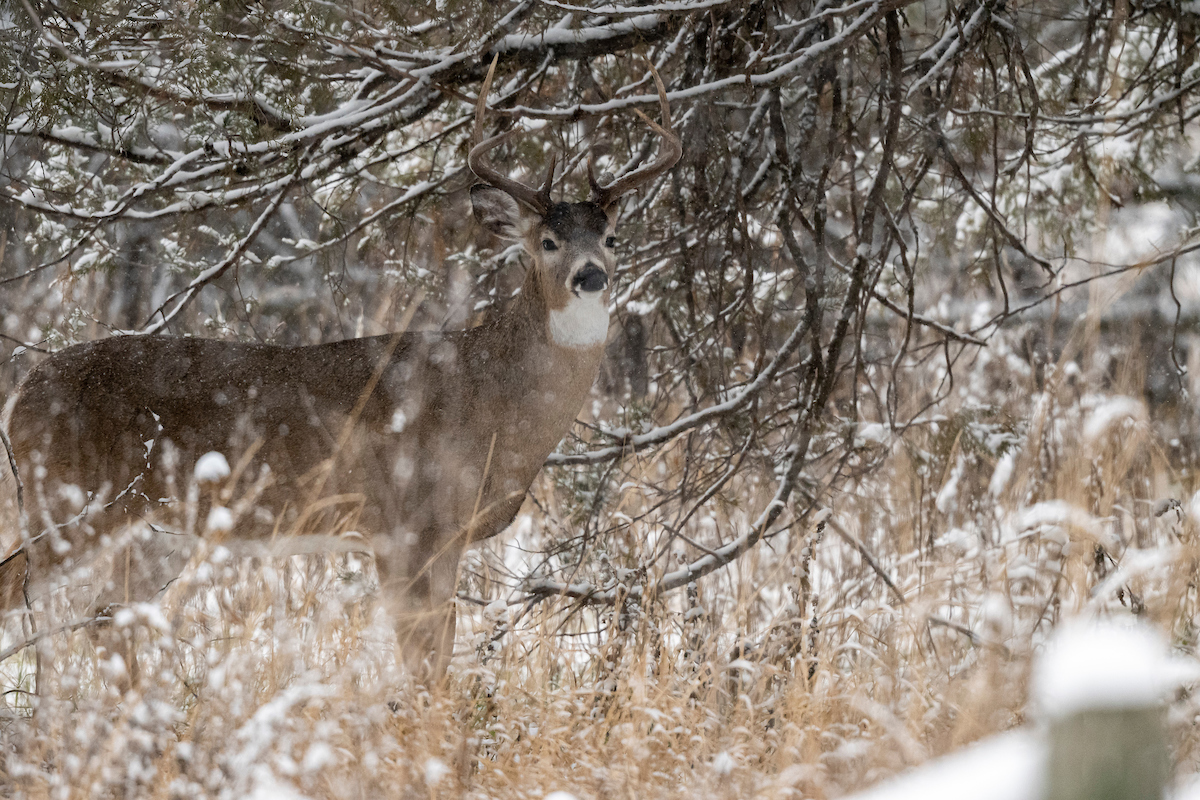
17. Chill Out
A bitter cold snap that plunges temperatures into the low teens to below zero anytime from late November to mid-December can shock deer into binge-eating. The colder the air, the bigger the shock and the greater their motivation to leave cover during daylight.
18. Defeat Deafening Sounds
Sounds can travel much farther—and clearer—on cold days, so use only your most silent clothes and equipment for late-season hunts. This phenomenon is especially common at dawn and dusk—peak hunting times.
19. Disappear Into Thin Air
If you can’t find a big pine, spruce, cedar or other conifer to conceal you and your tree stand, consider wearing lighter colors and open camouflage patterns. Once trees shed their foliage, darker camo patterns tend to define your outline rather than break it up.
20. Think Survival
In deciding when and where to hunt, realize that bucks will never be hungrier during hunting season than they are in the post-rut. Bucks are trying to recover from rutting activity, when they shed as much as 25 to 30 percent of their weight.
21. Count on Food, Not the Second Rut
The so-called second rut can’t rival hunger pangs for sparking deer activity. True, if an estrous doe is feeding where you hunt, it might provide a breeding opportunity no buck can resist. But it was food that brought them to the same place.
22. Even So, Play the Odds
When female deer congregate in late-season feeding areas, a buck has a target-rich environment in which to locate that rare doe that’s ready to breed. If the buck finds itself so fortunate, it might follow and pester the coy female just enough to stumble within range.
23. Work Your Way Outward
As hunting pressure fades, look to woodland cover to hunt first, and fields and food plots next. If deer can satisfy their dietary needs within cover, there’s no reason to risk feeding in the open.
24. Follow the Rub
If you find signs that a buck is back on earlier patterns, give a rub line a try. Start by hunting woodland stands closer to feeding sites, and then gradually move your stands toward its daytime sanctuaries.
25. Check Every Patch, Dimple, and Pimple
When doing drives or still-hunts in agricultural regions, check out every pothole, CRP field, grassy island, brushy depression, unpicked cornfield, marsh-bound island, or bulldozed brush pile.
26. Scout for Acorn Caches
Acorns are seldom widespread by late season, so focus on the few that remain. Whitetails almost always choose naturally produced, high-energy acorns over crops grown in fields or food plots.
27. Work Late
As deer’s metabolisms slow, they need less food. They bed early and remain bedded for much of the day. Therefore, focus your efforts on late-day hunts, when the deer will be at their hungriest.
28. Watch That Barometer
When the barometric pressure plunges, it’s time to grab your hand-warmers, face mask, and heavy boots and be waiting when deer move out to feed. You can be sure they know the forecast.
29. Deer Like It Dense
Deer retreat to thick sanctuaries to avoid human activity and/or to escape energy-robbing windchills. Hunt these retreats from downwind tree stands, or by sending in two or more drivers to push the deer to standers.
30. Catch Them With Their Flanks Exposed
Deer prefer to enter fields with the wind behind them, using their eyes to scan the field ahead and their nose to monitor the woods behind. Whenever possible, sit with the wind quartering toward you from deer’s expected approach.
31. Stay Mobile
Don’t stubbornly hunt a stand, hoping the wind will favor you at crunch time. Be flexible. Take a climber if bowhunting and be ready to move while late season deer hunting.
32. Seek Accessible Alfalfa
Deer in farm country feed heavily on alfalfa or other nutritious plants if stems and leaves are poking through light snow cover.
33. Put Them on the Cafeteria Plan
Next spring, try planting corn, beans, brassicas and clover varieties, staggering their planting time and locations to disperse feeding activity.
34. Knock It Down
When late-season whitetails target crops, they prefer to eat foods like corn, cowpeas, and soybeans that fall onto the snow or ground. Knock down a few rows each week with an ATV, truck, or snowmobile.
35. What About Forest Foods?
White cedar is the only woody browse that can sustain deer through 100 days in a deeryard. Each deer, however, requires 3- to 6-pound quantities daily, which strains most wintering sites.
36. The Low-Down on Fallen Fronds
Fresh green fronds on northern white cedars aren’t the only deer food worth noting. Cedar fronds continue to provide nourishment after dying, browning, and falling to the ground.
37. Plucking Food From the Old Man’s Beard
Another favorite item on the deer’s winter menu is “Old Man’s Beard,” a gray arboreal lichen resembling Spanish moss. These lichens grow on dead or dying spruce and balsam trees.
Whitetails seldom miss a chance to eat these beards, which is why they’re seldom within 6 feet of the ground.
38. Follow the Signs to Whortleberry
Don’t overlook the leaves and stems of late low blueberry—also known as whortleberry.
Whortleberries grow in clear-cuts, and along roads and abandoned pastures. You might also find them on rocky outcrops, especially around upland bogs and sandy riverbanks.
39. Dress Loose, Apply Heat
Wear several layers of moisture-wicking clothes before topping off with a jacket or parka. Also, wear a balaclava that holds hand-warmers behind the ears and neck for comfort.
40. Dial It Down
When preparing for late-season bowhunts, consider cranking down your compound’s draw weight about 5 pounds. Cold, long sits cause your muscles to tighten, making it difficult to pull the bow past its “break.” Just be sure to check your point of aim on a target if you make any adjustments.
41. Go Cross-Country
Some die-hard hunters look forward to late December and early January, when they can don snowshoes or cross-country skis to check for deer in the far ends of long valleys or ridgelines.
Check hillsides, knolls, and corners where swirling winds have swept away the snow and sunlight has exposed forage. Check sites near farming operations.
42. Focus on Fences
Look for likely crossing spots on fence lines and where trees have fallen across barbed wire. Set up a stand on the wooded edge where you have a clear shooting lane.
43. Scrutinize Does
Be attentive to feeding does. If other whitetails are in nearby woods, does will feed a while, then look toward the trees. It can tip you off to an approaching buck.
44. Slip the Thickets
Rutted-out bucks often feed at night, so force movement by still-hunting. Be ready: You might jump a buck and get a shot; a buck might stand and hold for you; or you might catch an unsuspecting buck in his bed.
45. Get Down and Dirty
Still-hunting in thick stuff requires more than just a stand-up approach. Get down and really look things over. Squat under the brush; bend to see around branches and trees; crawl to reconnoiter dense thickets.
46. Get the Attention of Post-Rut Bucks
A container of long-lasting, weather-resistant doe estrous deer attractant placed crosswind to your stand can be a late-season difference-maker.
47. Scent Combo
A combination of tarsal scent and deer urine on the ground, leading to a food scent, is an effective way to attract deer to your stand site.
48. Come Rain or Snow, Go
The prime time to still-hunt is during a light rain, but don’t pass up windy days. Deer movement will be suppressed, but you can make your way around without being seen or heard.
49. Take to the High Ground
What type of terrain is best for late-season still-hunting? It’s hard to beat a route along an extended hill, bluff or ridge overlooking a large tract of deer country. The elevation improves your visibility.
50. Try a Drive
Set up drives where blocks of cover can be isolated and surrounded, and where natural barriers can funnel deer to standers.
51. Check the Mines
Reclaimed strip mines don’t seem to have much going for them as far as deer hunting is concerned, but that’s not always the case. Patches of cedars, which commonly grow in poor soils, are great bedding areas.
52. Keep Out Till Later
Increase the productivity of late-season drives by keeping a few key spots off-limits during the regular season.
53. Four Instead of One
Set up as many as four stands, each favoring a different wind direction. Air currents should determine which one to use.
54. Plan the Right Approach Route
When selecting a stand site, pick the approach least likely to harbor deer. Also, be sure your route doesn’t cross the trails or activity areas you expect deer to use.
55. Hunt the Moon
During the dark of the moon, or when there’s heavy cloud cover at night, deer are often active later in the morning.
56. Be a Pathfinder
After the first late-season snowfall, get off the beaten track and look for tracks where you wouldn’t normally expect to find deer. Follow the first set you find.
57. Don’t Dismiss Snow-Covered Mast
Deer can easily smell acorns under a foot of snow and will dig to get them. Don’t overlook oaks.
58. Be Wise to Turkey Tricks
When slipping up to a feeding field, watch carefully for turkeys that could see you when the deer otherwise might not.
59. Get Out Front
Once a front passes, the best stand location often is a travel route connecting bedding cover to food sources.
60. Go Deep
The best public late season deer hunting opportunities now are on big tracts of federal or state lands, where you can find areas seldom visited by hunters. Study topos and find areas where no roads are present.
61. Hunt the Rough Stuff
Look for steep, rugged areas with jumbled cover where an old buck might feel safe. This can mean knolls and hills overlooking feeding areas or mountain laurel in open, mature hardwood forest.
62. Check Scrapes
Though scraping wanes during the rut and occurs mainly at night, there is a second flurry two weeks after the primary rut. If you find a late-season scrape near good bedding cover, you’ve likely found an exception to the night-scraping rule.
63. Slow-Mo Scan
The late-season hunter’s best tool might be a binocular. Train yourself to watch for any detail—the flick of an ear or tail, a deer’s round black eye or an antler tine—that might be the crack in the deer’s camouflage veneer.
64. Carry Those Rattling Horns
One three-year study found that the post-rut period is actually the best time to rattle in a trophy-class buck. Post-rut rattling brings more mature animals.
Late Season Deer Hunting Tips for the South
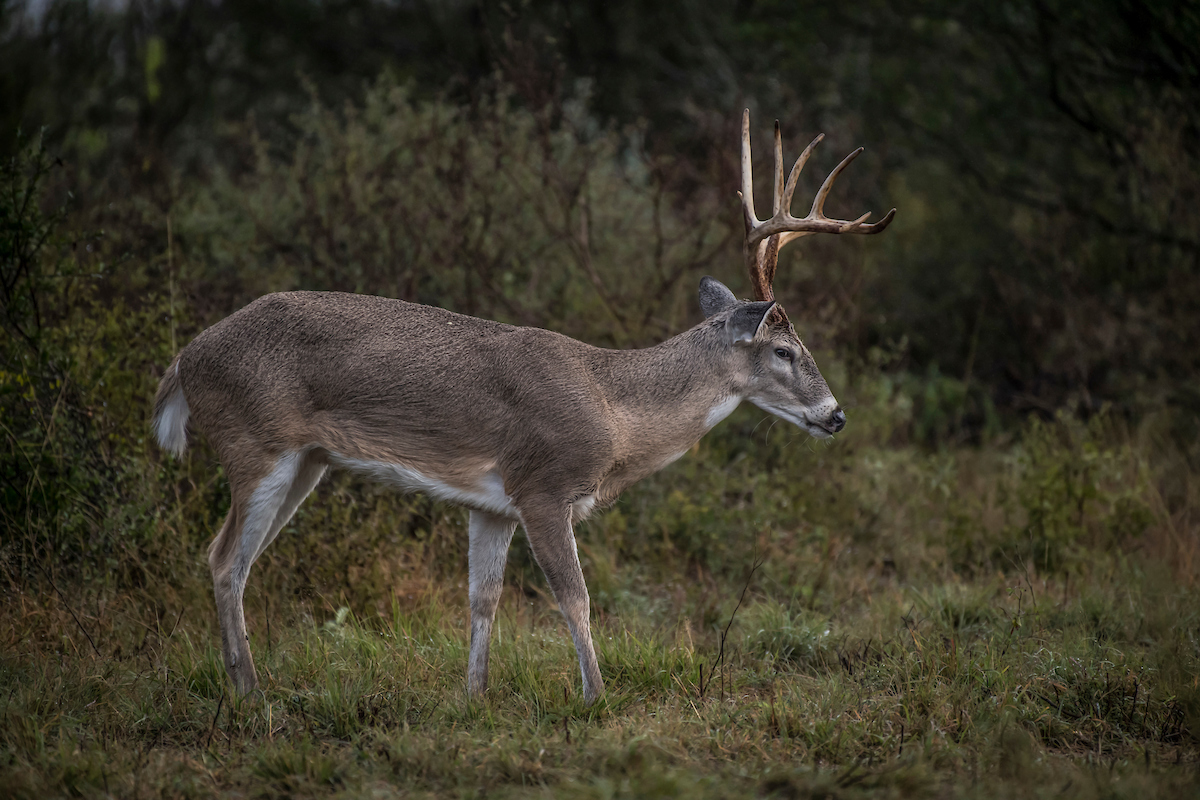
65. Let the Does Walk
If you’ve been busting does for meat, stop now. In most of the Deep South, the rut extends well into January. Does are buck bait during the rut and might draw in the buck you’ve been after.
66. Hunt the Clear-Cuts
Does like to bed down in cover such as broom sedge, young sweetgums and wax myrtle, which start growing within a year or two after an area has been cleared of timber.
67. Keep on the Sunny Side
If you’re hunting hilly ground, make sure you’ve got a stand covering a south-facing slope. After a front comes through and the temperature plummets, does will bed down on the sunny side of a hill to catch the sun’s warm rays throughout the day.
68. Revisit the Red Oaks
A stand of water oaks, shumards, sawtooths or other members of the red oak family tucked away in the woods can reward a hunter with a trophy buck.
69. Relocate Plot Stands
Predominant winds in the South tend to blow from the south or southwest during much of the early season, then switch to the northwest or north quadrants by the end of December. If you’ve got a stand on the north or west side of a food plot, move it to the opposite side to keep your scent from blowing across the field.
70. Move Back
If a buck catches the scent of a willing doe, he’ll probably enter the field and quickly herd the doe out of it. To take advantage, move a stand 100 to 150 yards or so back into the downwind side of the woods, so you’re facing upwind toward the food plot.
71. Re-Fasten Your Lock-Ons
The weather is a lot colder now than when you hung your lock-on stand last September. When it’s frigid, trees will contract in size slightly.
For safety’s sake, make sure your stand straps are still cinched tightly before you climb into your stand.
72. Check Bottomland Funnels
When winter rains flood the flatwoods, scout for places where there are highland trails that lead through the swamp or along the edge of it. Though bucks will slosh through water if forced to, they’d just as soon skirt it.
73. Watch the Narrows
An ideal funnel to watch is where a gully rises up from the lowlands to the narrowest part of a wooded ridge and another gully falls away on the other side of the pinch point.
74. Raise Your Stands
For concealment’s sake, it might be necessary to re-hang a lock-on higher or take a climbing stand a few feet up into the tree’s lower branches to break your silhouette.
75. Stay Warm
If you don’t have heavy insulated hunting boots, stretch a couple of cheap knit caps over the toes of your boots and tuck in a chemical heat pack when stand hunting.
76. Get Down
Bucks like to travel through corridors where the canopies of immature trees or evergreens afford them more cover. Sometimes being able to see for more than a few yards from a tree stand in such areas is a real chore for a hunter. A better option might be setting up a blind on the ground downwind of the trail.
77. Keep on the Sidelines
Bucks don’t necessarily escape from a drive by running forward; many times, they’ll sneak out the side when they hear drivers coming. Sometimes they’ll hunker down and wait until drivers pass, then leave by the back door.
78. Freeze and Look
If you bump a buck going to your stand, stop instantly and study the area where you jumped him slowly and carefully before moving on. It might be that the buck you jumped isn’t alone, and his big brother is lying low.
79. Set Up on Creek Crossings
Although bucks have no qualms about swimming a creek, they’ll often choose wider places where there is less current and depth, or the steepness of the banks is more gradual. Find and hunt such locales.
Late Season Deer Hunting Tips for the West
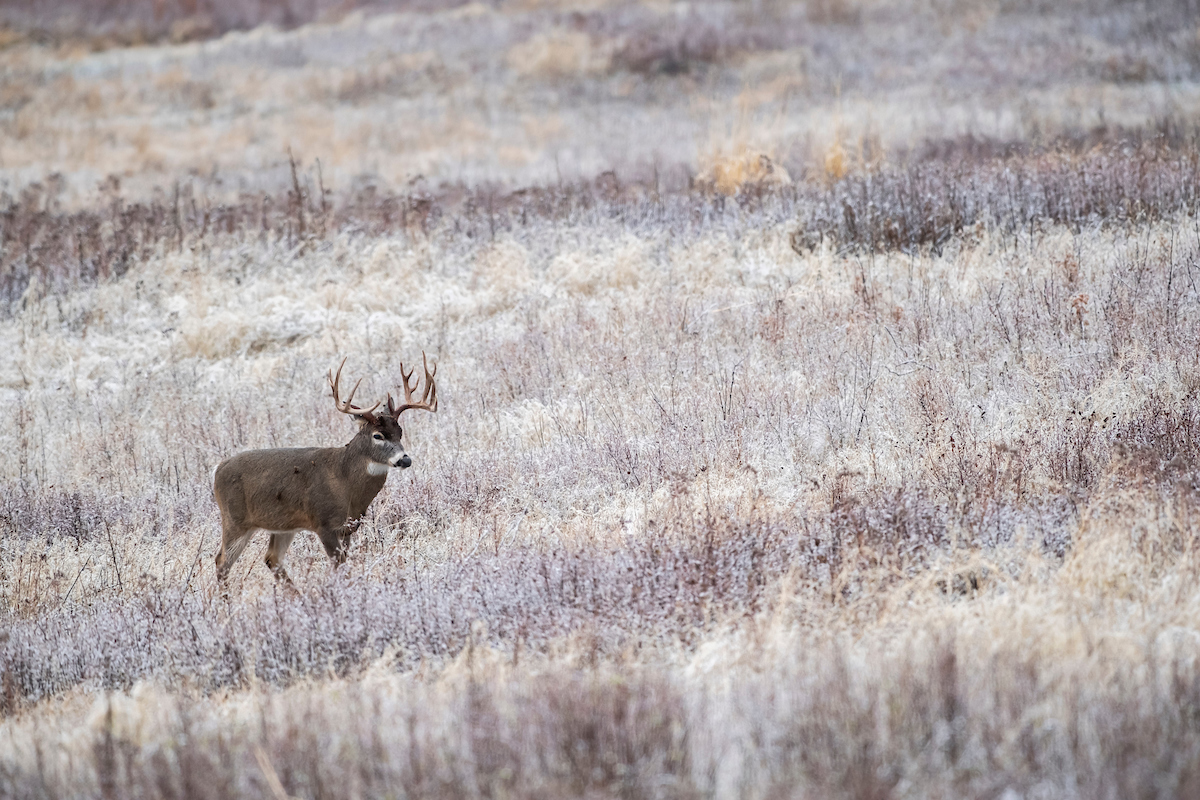
80. Hunt Broken Country
The best winter range is often rumpled badlands adjacent to hay and grainfields. Broken country has plenty of south-facing slopes that catch winter sun and east- and north-facing drainages that tend to hold the best late-season forage.
81. Hit the Hay
Western ranchers start to get their fill of deer this month as herds of whitetails, mule deer and even elk descend from neighboring public land on second-cutting alfalfa bales stored in stockyards. Some of the West’s biggest bucks every year are killed near haystacks.
82. Key on Forage
For the rest of the year, mule deer are shrub-eating generalists. This month, they’re keying on just a few highly nutritious plants: bitterbrush, cliffrose and mountain mahogany. Find those native shrubs, and you’ll find December bucks.
83. Hunt Umbrellas
In areas with deep foothills snow—Utah’s Wasatch Range, northern Arizona, Colorado’s Western Slope—key on low-elevation flats with large, woody shrubs. Deer will hunker under the branches of piñon pine, juniper, and even big sagebrush, which shed snow, break the wind, and create pockets of insulated, thermally secure cover.
84. Watch Ridge-Nose Lookouts
Big mule deer bucks love to bed on high ridges just steps away from deep timber. Glass high, sharp ridge lines for skylined antlers. They might be attached to that gigantic mule deer you’ve been waiting for.
85. Seek Out Warm Cover
In intense weather, still-hunt into dense cottonwood galleries, where the temperature can be 20 degrees warmer.
Bonus Tips for Late Season Deer Hunting
I have yet to kill a single deer this season. Not one. And I’ve hunted some pretty good ground. I have all manner of excuses at the ready and they are legitimate. But I’m not one for excuses. The simple fact is this: I’ve got about 10 days left before it’s over.
I refuse to give up. Thus here are five things I’ll do to salvage this season. Here’s hoping you can find one or two of them helpful in the quest to save yours. —Tony Hansen
1. Gut It Out
This isn’t so much a tactic as a mindset. You must not quit. Here in southern Michigan, the winter is off to a brutal start. We’ve got roughly a foot of snow on the ground with another 6-8 inches in the 72-hour forecast. The wind is blowing hard and the drifts are starting to become the kind that can hide the front end of a truck.
Late season deer hunting in this weather takes a special kind of determination. If you’ve never trudged across a cut bean field in 18 inches of snow, you don’t know what kind of fun you’re missing out on. The reward? A multi-hour sit in a tree stand with the wind threatening to remove every last inch of skin from your face. And seeing a single deer is far from a guarantee.
The upside? The deer are still out there, right where they’ve always been. If you have any available food, odds are good they’ll show up in daylight. If you’re there, you can kill one. If you’re not, you can’t. It really is that simple.
2. Find the Food
Adding to the frustration of the season that’s been is this little fact: Every single buck I targeted in October and November seems to have survived the gauntlet of gun season. I’ve either seen them on the hoof or captured trail camera images. Never before has this happened—usually at least one buck, if not more, will disappear or be taken by another hunter. Sometimes, all of them will vanish. But they’re there. And I can’t seem to get on a single one.
The deer are hitting a food source located off the property I hunt. They’re likely bedding on my piece, but approaching them is impossible. They chose that bedding location for a reason.
Without food, I’m out of the game. My goal is basic but difficult: Figure out what areas I have to hunt that are still holding a preferred food source.
If I find it, I’ll fill some tags. If I don’t, well, it’s going to be a long winter. And spring. And summer.
3. Hit the Bed
I am not afraid to hunt a major bedding area this time of year. I won’t do it until after Michigan’s muzzleloader season ends, however.
Hunting a bedding area right now is risky business indeed. Odds are pretty good of bumping a few deer. When you do, you just might send the buck you’re hunting onto another property. Do that in a place with heavy hunting pressure, and you’ll likely hear a neighboring shot that will end your chase for that particular deer in a very unsatisfying manner.
Once muzzleloader season ends, late season deer hunting pressure will drop a fair bit and this cold, snowy weather will help as well.
Slipping into a primary bedding area before daylight makes for a long, cold sit. But it can pay off. Deer heading back to bed from neighboring crop fields are the target. It’s a high risk, high reward scenario.
4. Obey Your Cameras
Trail cameras are useful tools all season. They are never more valuable than right now. I have every camera I own located on primary trails and feeding areas. Those cameras help me determine what food sources are hot, and what bucks are showing up.
With so few days remaining, I can’t afford a non-productive outing. The cameras give me an advantage and I need every one of those I can get.
5. Move Your Quarry
I’m not a huge fan of deer drives. I live in an area where parcels of land are pretty small. Pushing deer means sending them onto several other properties, most of which I can’t hunt. Getting permission to orchestrate a drive is almost impossible. That said, a well-coordinated “micro” push can work. You have to plan it carefully though.
A single driver is really all that’s needed, though the task is a bit easier and more effective with two. The goal isn’t to blow deer out or to get them running. The objective is to make them leave one bedding area and head for another patch of security cover, preferably one that’s on a predictable path of travel.
This can be done while bowhunting but it’s obviously more effective with the increased range of a muzzleloader. My favorite method of “nudging” is to simply use the wind. First, locate the shooter on the downwind side of the cover. About an hour later, send the nudgers upwind of the cover. Do this right, and the drivers won’t even need to step foot into the woods. The wind will do the work, sending human scent into the bedding area.
Read Next: 35 More Pieces of Deer Hunting Wisdom
When done correctly, the deer begin to funnel out of the cover en route to a new secure area…and to the waiting hunter.
